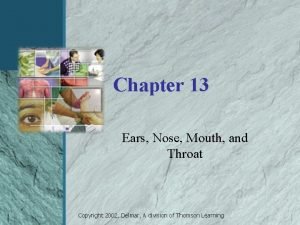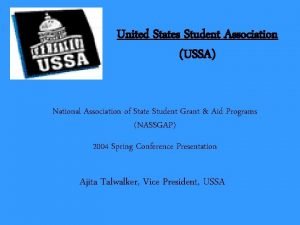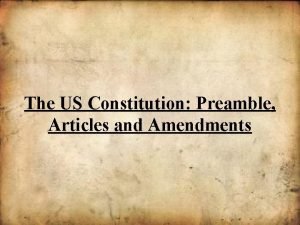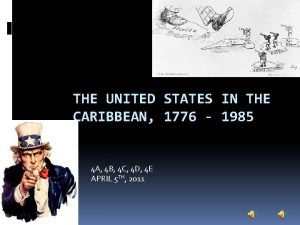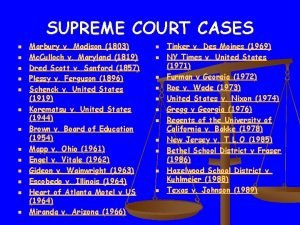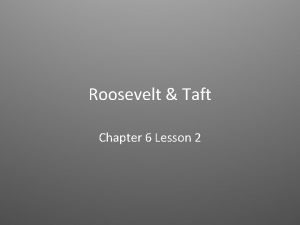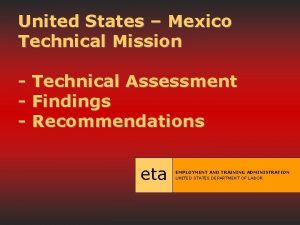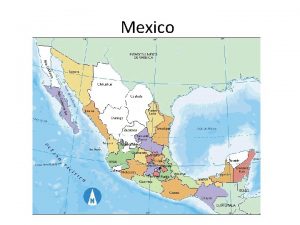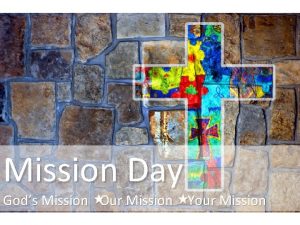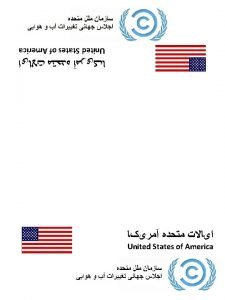United States Mexico Technical Mission Technical Assessment Findings



















- Slides: 19

United States – Mexico Technical Mission - Technical Assessment - Findings - Recommendations eta EMPLOYMENT AND TRAINING ADMINISTRATION UNITED STATES DEPARTMENT OF LABOR

eta Presentation by: Dr. Peter Accolla, Bureau of International Affairs (ILAB) U. S. Department of Labor Dr. Harvey Ollis, ETA U. S. Department of Labor eta EMPLOYMENT AND TRAINING ADMINISTRATION UNITED STATES DEPARTMENT OF LABOR

eta Scope of Mission • Technical Evaluation and Review of Chambanet • Developing a One-Stop Capability in Mexico • Modernizing Mexico’s Occupational Classification System

eta Technical Evaluation and Review of Chambanet Findings: • STPS has made significant investments in nation-wide computing environment • Outsourcing system development and hosting is widely accepted information technology practice • Decision to outsource Chambanet’s development produced timely implementation

eta Technical Evaluation and Review of Chambanet Recommendations: • Continue Outsourcing • Maintain architecture • Establish service agreements • Staff training and recruiting

eta Technical Evaluation and Review of Chambanet Recommendations (cont. ): 5. Community of Practice 6. Improve web site use 7. Improve interface & response time 8. Link to other Job Banks sites

eta Developing One-Stop Capability: Recommendations Service Delivery for Job Seekers: • Create a self-service option for job seekers – Resource room in each STPS field office – Allow job seekers to conduct their own job search and career exploration

eta Developing One-Stop Capability Findings for Self-Service Tools • Importance of developing of career tools for job seekers • Importance of adequate resources to provide comprehensive career services, otherwise, the value of STPS operation is limited for job seeker. • Importance of services beyond job matching, including: job search planning, career exploration and assessment of skills

eta Developing One-Stop Capability: Recommendations Self-Service Tools for Job Seekers • Provide well-equipped resource rooms/areas with information: – Labor markets – employment and outlook – Assessment and career planning – Education and training opportunities – Automated job listings or job matching • Provide workshops on career planning, resume writing, computer training

eta Developing One-Stop Capability: Findings: Business Involvement • Business involvement in STPS operation – Greater need for private sector participation – Current focus on job listing • STPS State Employment Committees – Include business, education and government representatives – Effectiveness varies, limited contribution to: • Developing labor market policy • Strategic guidance to STPS operations • Building coalitions between three sectors

eta Developing One-Stop Capability: Recommendations Business Involvement STPS and State partners should develop and implement business strategy – Ensures business involvement in all aspects of STPS planning and service operation – Promote active business role as full partner in labor exchange process – Ensure STPS operation to needs of private sector

eta Developing One-Stop Capability: Findings: Expanded Collaborations • Mexico does not have the large number of employment and training programs that exist in the United States • STPS is the primary government-funded employment and training agency • The challenge – how can STPS and the publicly funded labor exchange system set up strategic alliances with other government agencies with complementary missions

eta Developing One-Stop Capability: Recommendations Expanded Collaborations - STPS should establish strong collaborative agreements with Economic Development and Education • These agencies have complementary missions • Working with these agencies, STPS can assist residents in obtaining skills and placing individuals with requisite skills in jobs created by economic development

eta Occupational Classification System Recommendations • Develop a standard occupational classification system that provides: – Structure for producers and consumers of occupational and labor market data – Structure to support data collections, labor exchange, human resource management, and economic and workforce development • Prepare a plan for adapting an existing classification system

eta Occupational Classification System Recommendations (cont. ) • Develop a content model describing occupations to includes: – Requirements of occupations and worker characteristics – Identify transferable skills – Current information about occupations for employers, job seekers and educators • Develop a database of occupational information • Prepare a project plan the development of the content model and database

eta Occupational Classification System Recommendations (cont. ) • Develop a web-based application for resumes and job description • Provide service center staff support to assist users of the web-based application • Provide additional center staff assistance to improve job matches • Develop a project plan for the webbased resumes and job descriptions

eta Occupational Classification System Recommendations (cont. ) Career and LMI information dissemination • Develop a career exploration module – Uses the new classification system – Serves as an integrated component of Chambanet, allowing users to move from career exploration to job posting and back • Develop a career exploration tool that can be used by job seekers, employers, workforce staff, and educators – Assists users make informed planning decisions

eta Occupational Classification System Recommendations (cont. ) • Develop a career exploration tool that answers commonly asked questions at local level (cont. ): • What does this occupation pay? • Are there openings for this occupation? • How many people are employed in this occupation? What is future demand? • What training and/or education is necessary?

eta Contact Information Harvey Ollis, Ph. D. , Manager Electronic Linkages Group Office of Workforce Investment Employment and Training Administration U. S. Department of Labor 200 Constitution Ave, NW, rm S-4231 Washington DC 20210 ollis. harvey@dol. gov (202) 693 -3699
 Mouth and throat assessment normal findings
Mouth and throat assessment normal findings Mexican cession
Mexican cession United parcel service mission statement
United parcel service mission statement Was the united states on the axis powers or allied powers?
Was the united states on the axis powers or allied powers? Unit 2 the united states and canada
Unit 2 the united states and canada Slave state
Slave state Olympic soccer winners
Olympic soccer winners United states v. nixon significance
United states v. nixon significance United states student association
United states student association The united states ought to provide a universal basic income
The united states ought to provide a universal basic income Preamble
Preamble The united states in the caribbean 1776 to 1985
The united states in the caribbean 1776 to 1985 What is the southeast region of the united states
What is the southeast region of the united states Expansion of the united states of america 1607 to 1853 map
Expansion of the united states of america 1607 to 1853 map How does nicholas novikov describe the united states
How does nicholas novikov describe the united states Who was the previous owner of the spanish cession
Who was the previous owner of the spanish cession Author of awake united states
Author of awake united states Mapp v. ohio
Mapp v. ohio Why did the united states invade cuba in 1898?
Why did the united states invade cuba in 1898? Chapter 6 lesson 2
Chapter 6 lesson 2
